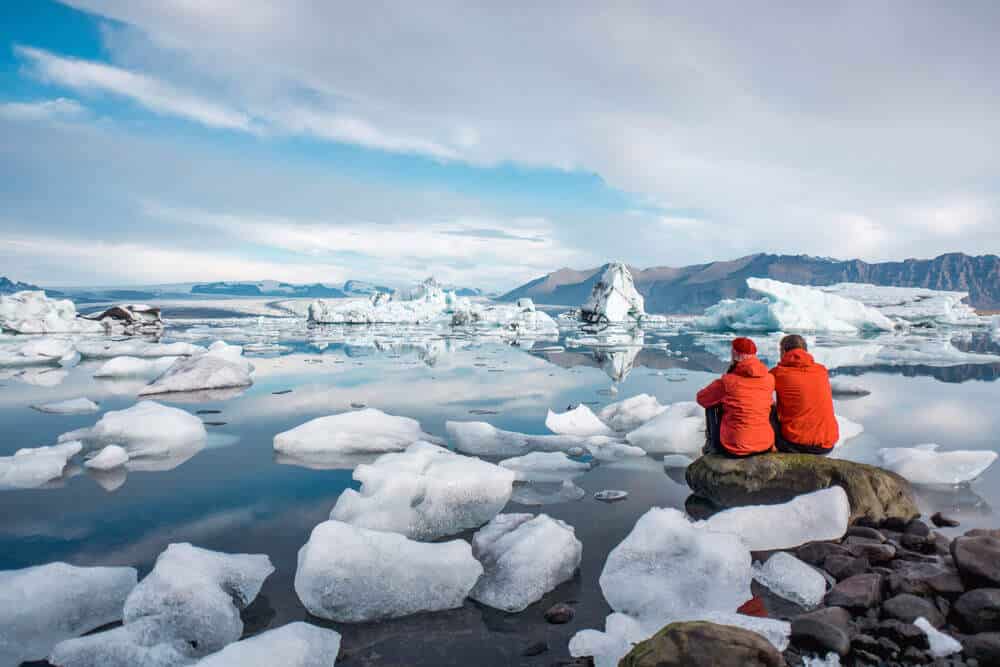Walking on a glacier is a lot of people’s dream, and in Iceland, it can be a reality, however, whilst they are undeniably beautiful they can be dangerous. So read on for crucial glacier information!
Glaciers in Iceland take up 11% of our land, and almost all of our tourists want to visit them, and it is totally understandable, they still mesmerize Icelanders! They are even part of our nickname ‘The Land of Ice and Fire.’
Many of our day tours take you to see these icy wonders, the most popular being to the glacier lagoon, where you can see blue icebergs calving, and floating slowly out to sea, or being swept up onto the black sands of Diamond Beach. On the South coast tour, we drive up to Sólheimajökull, right next to the infamous Eyjafjallajökull, the volcano that in 2010 erupted with such fine ash that it stopped almost all air travel in Europe. You can see the ash and debris from that, and other eruptions, in layers within the ice even now.

Seeing glaciers is undeniably breathtaking, feeling the ice-cold air rush off them, and marveling at the sheer size of them, however, you may well want to walk on one. The most important thing we can say at this point is;
Please don’t walk on a glacier without a trained guide.
Glaciers look solid but they are flowing, and throughout the year they move, melt, and grow. You might think they would melt evenly, like an ice cube, but they don’t, with meltwater from the surfaces opening up moulins, roughly circular wells that can reach the bottom of a glacier, which could be hundreds of meters. The melt water can actually help lubricate the whole glacier in its journey!
Another, more commonly known hole in the ice is a crevasse. These gaping cuts in the ice can be covered by a thin layer of snow, so it may not be immediately visible. Specially trained and experienced guides can read the ice better than most people, but will always have a length of rope with them, should you fall into one. Even the most well trained guides won’t go onto glaciers that they know intimately by themselves, as it is almost impossible to climb out of a crevasse by yourself, even with ice picks and crampons.
The equipment taken onto the glacier is extremely important. Gym shoes will not do, even a lot of hiking boots are not up to standard. Hard soled, sturdy boots are required, with proper crampons firmly fitted to them. You’ll also need to wear a harness and a helmet in case you fall. Do not worry though, all this gear will be lent to you by the company you go with.
What you need to bring is waterproof and warm clothing, as well as being on ice, the wind-chill factor can drop the temperature right down. The biggest glacier in Iceland Vatnajökull has it’s own weather system! It’s always good to have a small snack in your pocket, you burn up a lot of energy on the ice, and a cheeky bar of chocolate keeps you warm from the inside.
Another awesome activity available is Ice Climbing. It is exhausting, but also one of the most incredible activities to do, and the buzz you feel having completed it is huge. Even the most hardened rock climbers will find their forearms aching the next day, as with each time you reach up you have to dig in your ice-climbing axe. If you are scared of heights maybe try rock climbing first, but if you are feeling energetic then definitely give this awesome sport a go!
Please get in touch if you want to learn more about how to view or walk on a glacier during your time in Iceland.


